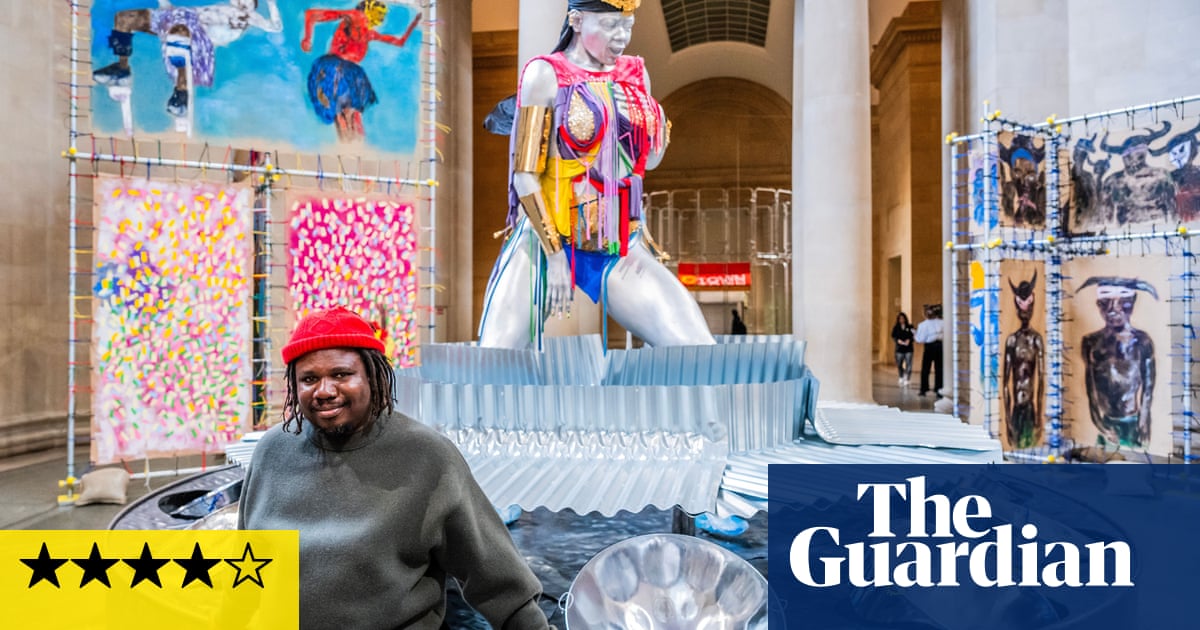
In 1255, the King of France gave Henry III of England an elephant; a sensation for medieval eyes that drew crowds to the royal menagerie at the Tower of London, including the artist, chronicler and Benedictine monk Matthew Paris. The picture Paris drew from life shows with clarity how the elephant has its leg tied to a post, how it stands imprisoned and wearily spurts water from its trunk. He shades the ridges and rumples on its vast body, as he tries to accurately depict this creature that’s stepped out of fable.
This 13th-century portrait of an elephant encapsulates the paradoxical delights of the British Library’s cornucopia of animal art. To medieval folk, an elephant was a monstrous legendary beast from their myths of faraway lands – yet Paris pins this fantastic being to reality, tying it down with his objective gaze. From this early attempt at scientific natural history, to a tiny drawing of a bird in flight from Leonardo da Vinci’s Codex Arundel, to Ludwig Koch’s pioneering 1953 gramophone record of British bird songs, Animals explores how human beings have sought to observe and understand our fellow species. Yet it also revels in the fabulous, impossible dreams we have made of them.
Roll up to meet the Monkfish, a fish that looks just like a monk! This is how an illustration from Pierre Belon’s 1551 book The Natural History of Strange Sea Fishes depicts the creature: its human head is tonsured and its scales are shaped into monastic robes. The contrast with Paris’s careful study of an elephant, centuries earlier, shows the invention of the printing press didn’t instantly lead to modern science but instead proliferated fakes and fictions, like Renaissance social media. As late as 1718, supposedly in the Enlightenment, the Dutch artist Samuel Fallours was illustrating a book on tropical fishes with unreliable images of brightly coloured creatures, including a mermaid baring her breasts as she flicks her long blue tail.
Yet when it comes to the sea, fact is often as weird as fiction. A Renaissance map by Abraham Ortelius shows the sea populated by hybrids that blend mammal, fish, reptile and even human features: you can almost hear the sailors in dockside inns telling Ortelius about the monsters they have seen. But above it hangs a scientifically correct 18th-century study of a deep sea viperfish by Mark Catesby that’s just as mystifying.
We may think we have outgrown medieval marvels, but we still can’t see straight when it comes to sharks. The pulp cover art of Peter Benchley’s 1974 novel Jaws is shown next to Nicolas Steno’s 1669 engraving of a Great White Shark’s head, in which the visibly shrivelled flesh of the preserved specimen does not diminish the scale and terror of that mouth.
This exhibition is a cabinet of curiosities, tolerantly enjoying error and accuracy, happy to set the impossible beside the real. If it has a thesis it’s a defence of human curiosity. That is not to accuse it of shallow humanism. There is no attempt to disguise our abuse of the planet or the vanishing of species. An illustration from The Zoology of the Voyage of HMS Beagle, edited by Charles Darwin, portrays a Falklands wolf: Darwin predicted this native of the Falkland Islands, which had no fear of humans, would soon be extinct. He was right. A 1983 recording preserves the song of the Kauaʻi ʻōʻō, a Hawaiian bird that became extinct soon after it was made.
As a Natural History Museum scientist on film argues, the archive of natural history that’s been built up over centuries may help us better understand and so better defend nature. This exhibition is pro-knowledge, pro-science. Its true heroes are the often unsung pioneers who helped build up a complex picture of nature. In the early 19th century, Sarah Bowdich Lee travelled around Britain painting fishes from life, only portraying them freshly caught so she could record their real colours: the rendering of a Brown Trout from her book The Fresh-water Fishes of Great Britain glistens with brilliant scales despite its brownness, a fish so real it seems to swim before your eyes. Who needs monsters when reality is as beautiful as this?
The trouble is, we don’t look with Bowdich Lee’s fresh eyes often enough. Animals go from wonder to bore to victim so quickly, in a modern world that so often seems to lack the respectful curiosity shown by Matthew Paris back in the 13th century. A photograph from 1852 shows a hippo asleep in its enclosure at London Zoo, its floppy slumbrous bulk dwarfing the Victorians behind it as they peer through the bars. Are their faces illuminated or jaded, enlightened or dead-eyed? It’s so hard to tell with humans.
Animals: Art, Science and Sound is at the British Library, London, from 21 April to 28 August.












